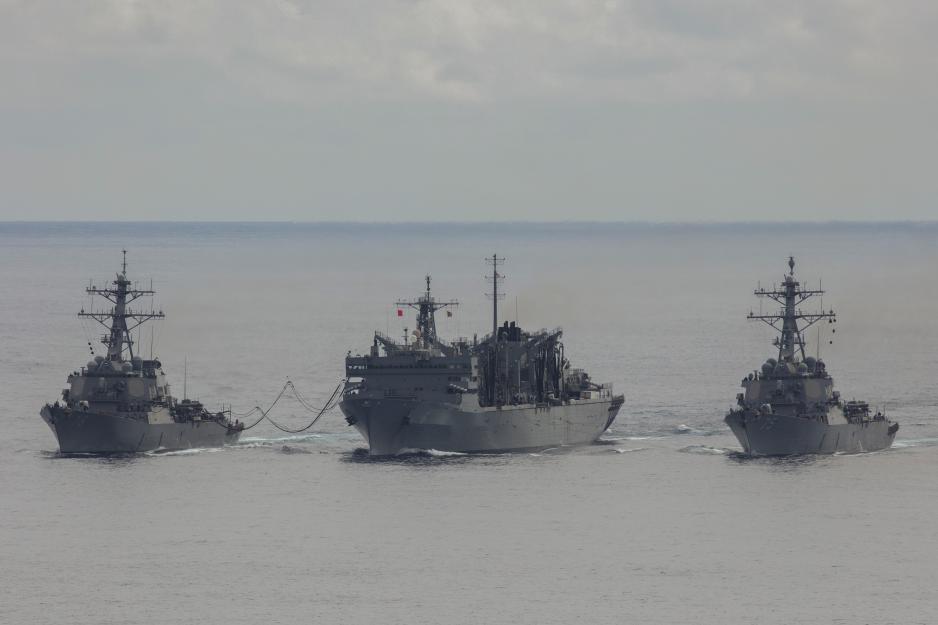US Navy Arctic Strategy: New Challenges in a "Blue" Arctic

USS Donald Cook, USS Porter og USNS SUPPLY during a British-American maritime exercise in the Barents Sea in May/April 2020. (Photo: Royal Navy/ Dan Rosenbaum).
The Department of the Navy has released its new strategic blueprint for the Arctic, titled “a Blue Arctic”. The strategy describes how the Department of the Navy will apply naval power as the US continues to prepare for a more navigable Arctic region over the next two decades.
On Tuesday, the Department of the Navy released its new Arctic strategy paper, titled "a Blue Arctic".
According to a press release from the US Navy, a Blue Arctic provides the general idea that the Arctic is gradually turning from “White” to “Blue”— and by that, reduced ice coverage is making Arctic waters more accessible and navigable, which will enable nations and their navies to access new sea routes, resources, and markets.
“As our naval force continues to meet the challenging demands of a Blue Arctic in this era of Great Power Competition, the Department of the Navy remains committed to protecting the Arctic environment and ensuring naval forces do their part to help preserve it,” Secretary of the Navy Kenneth J. Braithwaite noted.
He added that the blueprint guides how the Department will continue to provide the right levels and types of presence on, under, and above Arctic water, ensuring America is prepared to compete effectively and efficiently to maintain favorable balances of power.

Regional challenges
The strategic blueprint outlines regional challenges facing the United States in the Arctic Region in the coming years, ranging from the changing physical environment to increased military activity by China and Russia.
"Without sustained American naval presence and partnerships in the Arctic Region, peace and prosperity will be increasingly challenged by Russia and China, whose interests and values differ dramatically from ours," the blueprint states.
Accordingly, the US Navy will achieve the US' enduring national security interests in a Blue Arctic by pursuing the three objectives of maintaining enhanced presence, strengthening cooperative partnerships; and build a more capable arctic naval force.
"U.S. Naval forces must operate more assertively across the Arctic Region to prevail in day-to-day competition as we protect the homeland, keep Arctic seas free and open, and deter coercive behavior and conventional aggression. Our challenge is to apply naval power through day-to-day competition in a way that protects vital national interests and preserves regional security without undermining trust and triggering conflict," the strategy reads and continues:
"These challenges create a unique – but limited – window of opportunity to chart a new course for American naval power in the Arctic Region. A Blue Arctic requires a new approach by the Navy-Marine Corps team to modernize the future naval force to preserve our advantage at sea and advance U.S. interests in the region."
The strategy follows a Tri-Service” maritime strategy titled "Advantage at Sea" released in December together with the US Marines and Coast Guard.





